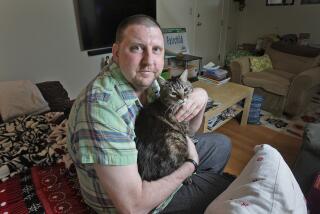The Issue Is the Issue, Not the Man : Dying with dignity must be separated from the Kevorkian controversy
- Share via
“In a civilized country, you kill the pain, not the patient.” Thus did Dutch physician Karl Grunning summarize the case against euthanasia in a Times interview last March.
The Netherlands long had an informally tolerant policy toward euthanasia by physicians. More recently, however, as that country seemed to be in danger of becoming a world capital of death, a public backlash set in. (Among the proposals that had been made: euthanasia hotels, euthanasia for deformed newborns and assisted suicide for non-medical reasons.) In the face of the highly vocal reaction, the Dutch legislature was forced to formalize what had been informal.
Significantly, perhaps, the Dutch legal compromise is less a true agreement than it is an agreement to disagree. Euthanasia will remain officially illegal, but physicians who observe a set of ethical guidelines will be secure from prosecution. In effect, the Dutch have banned only “amateur” euthanasia.
Will the United States eventually be where the Netherlands now is? There are those who would wish this, and more, notably the disturbing and quite possibly disturbed Jack Kevorkian. The suicides in which this physician has assisted would have been illegal in the Netherlands. They would also have been illegal in California even if Proposition 161, the euthanasia proposal defeated here in 1992, had passed. Many of Kevorkian’s clients have not been terminally ill. He has had no longstanding relationship with most of them. He has not routinely sought psychiatric opinion before proceeding. Carbon monoxide, his preferred instrument, bespeaks the executioner far more than the concerned physician.
The case for Kevorkian, such as it can be made, relies less on mercy toward the terminally ill than it does on suicide as a civil right. Suicide, as such, is not illegal in any of the 50 states. If it is not illegal, how can it be, at all times, illegal to assist in it? This was the question that seems to have stopped Michigan Circuit Court Judge Richard C. Kaufman when, last Tuesday, he struck down a Michigan law making it a felony to help another person kill himself, though he also made reference to the Supreme Court’s 1990 decision permitting the refusal of medical treatment.
The real challenge to Judge Kaufman was in spelling out rules to determine when an assisted suicide is not a disguised murder. This is exactly the task that the Dutch legislature has found so difficult, but it is clearly a legislative rather than a judicial task. Just as clearly, here in California, it is a task better addressed by the Legislature, with its freedom to debate, revise, debate again and revise again, than by the initiative process with its crude up-or-down finality.
Kevorkian is forcing a question to which he himself has given only the worst answers. But the question remains with us in any event, and we urge thoughtful and timely legislative attention to it.
More to Read
Sign up for Essential California
The most important California stories and recommendations in your inbox every morning.
You may occasionally receive promotional content from the Los Angeles Times.













